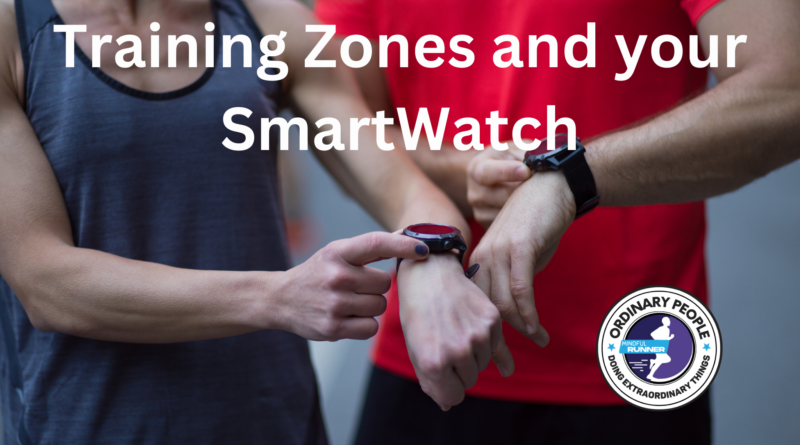Training Zones and your SmartWatch
Smartwatches have evolved into highly specialized tools for runners, far removed from being mere fashion statements. They come loaded with a plethora of features that can aid in training optimization. One crucial aspect is their training zone capabilities, which when utilized correctly, can significantly boost running performance by helping you target the right type of training. This article aims to demystify the five training zones typically found in smartwatches and provide actionable insights on how to leverage them effectively in your running regimen.
Preliminary Steps: Setting Up Your Smartwatch Accurately
Before you jump into utilizing the training zones, ensure that your smartwatch is calibrated with accurate personal metrics. Here’s why it’s crucial:
- Age/Birthdate: Essential for calculating your maximum heart rate (HRmax), a cornerstone for training zones.
- Weight: Weight factors into the caloric expenditure equation, allowing for more targeted training.
- Height: Vital for assessing stride length, VO2 max, and various other metrics.
- Activity Level: Some smartwatches inquire about your general activity level to fine-tune the watch’s recommendations.
Decoding the 5-Zone System
The 5-zone system is fairly standardized across most smartwatches, although different brands may give them unique names. Here’s what each zone generally implies:
- Warm-Up Zone(Z1): This is your starting point and also your recovery zone. Training here helps in improving basic aerobic capacity and stress reduction.
- Easy Zone(Z2): This zone is optimal for long, easy runs. It enhances basic cardiovascular fitness and serves as an excellent pace for active recovery days.
- Aerobic Zone(Z3): This is your ‘bread and butter’ zone for longer races and should be your target for medium-length runs. Training in this zone improves aerobic capacity and endurance.
- Threshold Zone(Z4): This zone borders on high-intensity and is ideal for tempo runs. Training here helps improve your anaerobic threshold, allowing you to maintain a faster pace for longer periods.
- Maximum Zone(Z5): This is your sprint zone, unsustainable for long periods. However, short bursts of training here can significantly improve anaerobic and muscular power.
Training Zones in Action: A Closer Look
The key is to match these zones with specific training methodologies. For example:
- Low-Intensity Training: Best aligned with the Warm-Up and Easy Zones. Ideal for building your aerobic base and facilitating recovery.
- Lactate Threshold Training: This usually falls under the Threshold Zone. Activities here are designed to improve your ability to sustain a faster pace for longer, by delaying the onset of fatigue.
- VO2max Training: Highly intense and aligned with the Maximum Zone. These workouts aim at increasing your ability to process oxygen, crucial for high-speed running.
Zone Anchor Points
The default on most smartwatches is to anchor your zones on Maximum Heart Rate, which is a generic calculation based on the biometric data you entered when you set your watch up. There are, however, better and more specific points to anchor your zones on.
Lactate Threshold as an Anchor Point
Instead of relying on a generic Maximum Heart Rate, anchoring your zones on your Lactate Threshold Heart Rate (LTHR) can be more effective for targeted training. This approach is supported by the Joel Friel test, where the average heart rate during the last 20 minutes of a 30-minute time trial is taken as your estimated LTHR. By using LTHR as an anchor, your training zones will be more finely tuned to your body’s specific aerobic and anaerobic transition points.
Running Functional Threshold Power (rFTP) as an Anchor Point
Another advanced anchor point is rFTP, which is especially valuable if your smartwatch or associated sensors can measure running power. Unlike heart rate, power is not influenced by environmental factors, providing a more consistent metric for anchoring zones. After determining your rFTP through a 20-minute test run, you can set up power-based zones that are more aligned with your real-world performance capabilities.
Training at the Heart of the Zone
Once you’ve set these anchor points, aim to train in the middle of your respective zones. While the zones are generally accurate, they are not always precisely so. Training at the edges of a zone could risk missing the intended physiological stimulus. Instead, operating at the midpoint of each zone ensures that you are within the correct range to meet your training objectives.
By adopting a more sophisticated anchor like LTHR or rFTP, you can make your training zones more personalized and effective, which in turn will make your training more efficient and impactful.
The 80/20 Rule: Backed by Science and Coaches Alike
The 80/20 rule is a principle supported by a substantial body of scientific research and endorsed by the majority of experienced running coaches. According to this principle, runners are most likely to see optimal performance improvements when 80% of training is done at low intensity, and the remaining 20% at higher intensities. This ratio can be applied through different training philosophies, each of which offers unique benefits:
Polarized Training
In a Polarized Training approach, 80% of your total training time is allocated to low-intensity zones, complemented by 20% in high-intensity zones. This strategy is grounded in the belief that building endurance through extended periods of low-intensity exercise, coupled with targeted high-intensity sessions, fosters improvements in both speed and power.
Pyramidal Training
Conversely, Pyramidal Training promotes a balanced distribution of effort across the Aerobic and Threshold Zones. This approach allows for more moderate-intensity workouts, equipping you for a diverse range of racing conditions.
Implementing Zone Training in Your Routine
Training effectively requires more than just knowing your zones; it involves implementing them into your regimen in a balanced and intelligent way. Here’s how to go about it:
Set Accurate Biometrics
First, ensure that your smartwatch is programmed with accurate metrics like age, weight, height, and activity level. This sets the groundwork for more personalized training zones, though, as mentioned in our section on “Zone Anchor Points,” there are more specific ways to anchor your zones, like Lactate Threshold and rFTP (relative Functional Threshold Power).
Understand Your Training Anchors
Joel Friel and others recommend specific tests to determine metrics like your Lactate Threshold, which can then serve as a more precise anchor for your zones. Similarly, rFTP is another critical metric that you can set manually based on periodic testing.
Train in the Middle of the Zone
Zones are designed to give a range of acceptable intensities for a workout, but it’s a good practice to train in the middle of the prescribed zone. Training at the edges may lead to inaccuracies, as zones provide general guidelines but are not laser-focused.
Adopt a Balanced Approach
While the 80/20 rule provides a useful guideline, remember that this can be distributed in different ways depending on whether you’re following a Polarized or Pyramidal training philosophy.
Mindful of Metrics
Revisit our Mindful Runner articles on Low Intensity Training, Lactate Threshold Training, and VO2 Max Training to delve deeper into each zone and understand how it aligns with these advanced training concepts.
Adjust and Reassess
Your training zones are not set in stone. As you progress and reassess your performance metrics, you should recalibrate your zones to align with your current fitness level.
Training zones on your smartwatch can be invaluable guides in your journey towards becoming a better runner. These zones provide a structured approach to varied training, allowing you to optimize your workouts for better speed, endurance, and overall performance. With the right balance and awareness, you can tap into your full running potential.
The next time you go out for a training run see if you are training in the correct zone. What we have found is that most recreational runners run too hard in every run rather than mostly at Low Intensity and sometimes Hard.
These articles are penned by certified coaches and encapsulate the same advice and training strategies imparted to our athletes on a daily basis. Rooted in scientific evidence yet seasoned with decades of practical experience, the guidance offered is designed to be both reliable and immediately actionable for runners of all levels.




